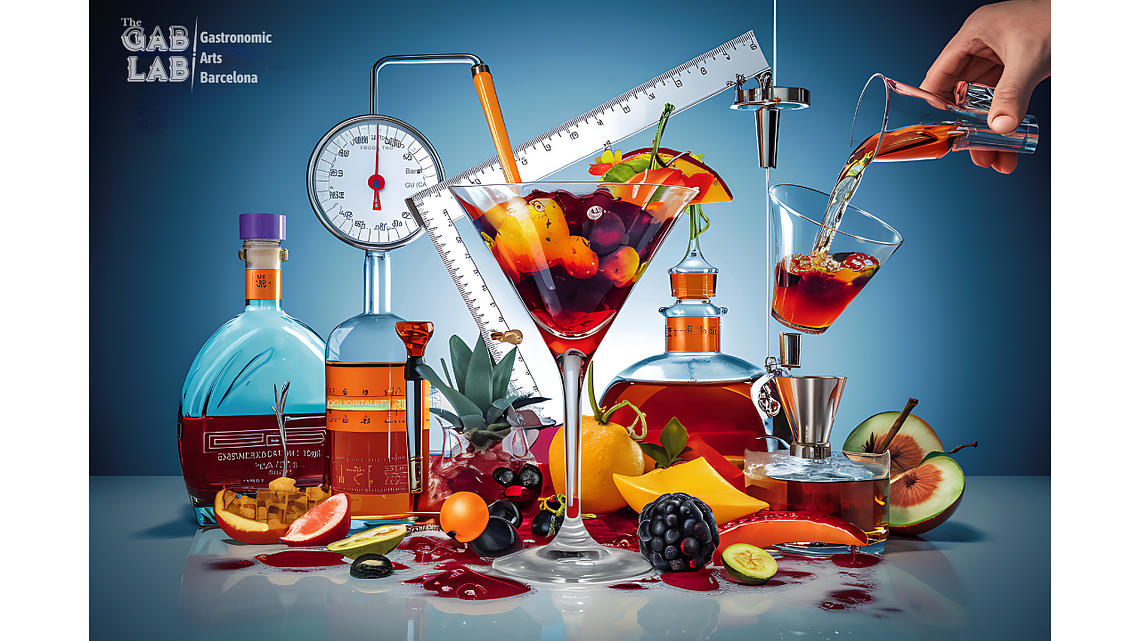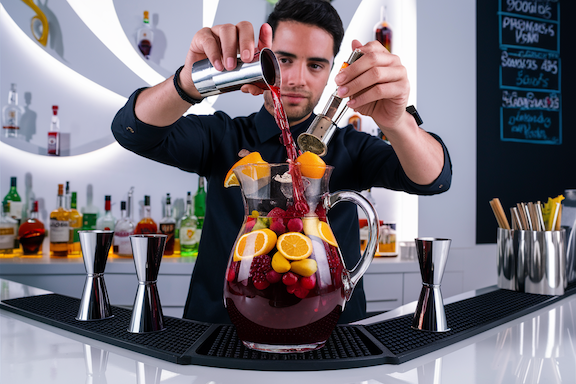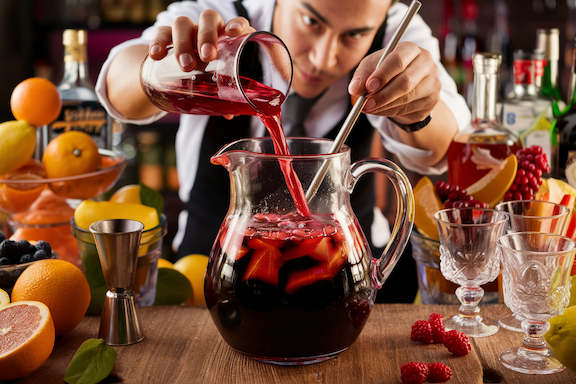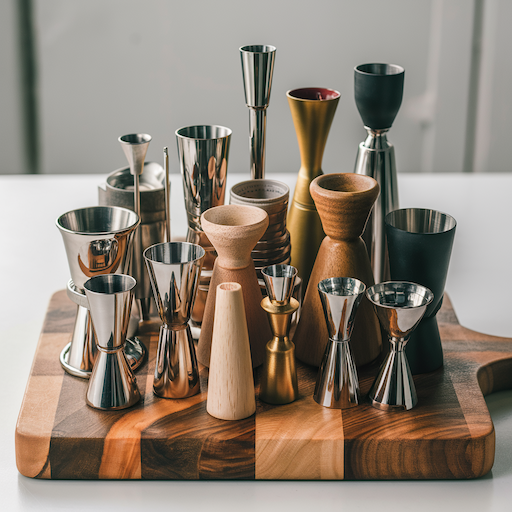The Art and Science of Making Sangria and Other Mixed Drinks: Free Pouring vs. Jiggering
Master the Art and Science of Sangria: Revealing the Secrets of Free Pouring vs. Jiggering

Sun 7 Jul 2024
Bartending isn't just a job; it's a craft filled with skill, tradition, and a bit of magic. It combines the precision of a scientist, the creativity of an artist, and the showmanship of a performer. Over the years, bartending has evolved into a revered art form with its own set of practices, techniques, and debates. One of the biggest debates in bartending is about 'free pouring' versus using a jigger for measuring ingredients. This debate becomes particularly interesting when applied to making Sangria, a fun and fruity drink that captures the essence of summer and the spirit of conviviality.
The Coolness of Free Pouring
Free pouring is when bartenders pour alcohol straight from the bottle without using a measuring tool. It looks super cool, almost like a dance. Here are three reasons why free pouring is the traditional method:
- Skill and Respect: Just like how a talented chef shows off their cooking skills, a bartender shows their expertise by free pouring. It takes lots of practice to get it just right.
- Smooth Moves: Bartenders pour with style, twisting their wrists and making the liquid flow perfectly. It’s like watching a performer on stage.
- Entertainment: When a bartender free pours, it’s like a mini show. They can juggle ice, pour with flair, and create a fun experience for the people watching.
Free pouring is not just about getting the drink into the glass; it's about doing it with passion, style and most importantly precision.
According to BinWise, "The generally accepted free pouring technique and bartending counting method is to use a 4 count and have each number equal half an ounce poured. But counting to four doesn't make it the right amount. Counting to four at the right speed is what you're after. And the key to doing that is practice."

The Science Behind Free Pouring
Even though free pouring looks like magic, there's science involved. Bartenders often use a rule called the three-second rule, meaning it takes about three seconds to pour one shot (around 30 mL or 1 Oz) using a special spout on the bottle. Here's how it breaks down:
- 0.5 second: 5 mL or ⅙ Oz
- 1 second: 10 mL or ⅓ Oz
- 1.5 seconds: 15 mL or ½ Oz
- 2 seconds: 20 mL or ⅔ Oz
- 2.5 seconds: 25 mL or ⅚ Oz
- 3 seconds: 30 mL or 1 Oz
- 3.5 seconds: 35 mL or 1⅙ Oz
- 4 seconds: 40 mL or 1⅓ Oz
- 4.5 seconds: 45 mL or 1½ Oz
- 5 seconds: 50 mL or 1⅔ Oz
But this can change based on how fast the bartender counts, how they tilt the bottle, and what kind of pourer they use. To make it simpler, some bartenders count to four, with each second equaling half an ounce.

What Affects Free Pouring?
Several things can affect how accurately a bartender free pours:
- Gravity and Air Pressure: How much liquid is left in the bottle, the air pressure, and even the height above sea level can change how the liquid pours.
- Pour Spouts: Different pour spouts can make the liquid flow faster or slower, so bartenders have to adjust their technique.
- Timing: Bartenders practice a lot to get their timing right, but if they get distracted, it can mess up their pour.
- Thickness of the Liquid: Some liquids, like sugary Sangria, pour more slowly than others. This depends on how thick they are and their temperature.
Different Countries, Different Standards
Different places have different ideas about what a standard 'shot' or 'serve' is:
- USA/Canada: ½ Oz (1.5 seconds), ¾ Oz (1.75 seconds), 1 Oz (3 seconds), 1¼ Oz (3.75 seconds), or 1½ Oz (4.5 seconds)
- Europe: 20 mL (2 seconds) or 40 mL (4 seconds)
- UK: 25 mL (2.5 seconds), 35 mL (3.5 seconds), or 50 mL (5 seconds)
- Australia/New Zealand/Asia: 15 mL (1.5 seconds) or 30 mL (3 seconds)
This can be confusing, but it shows why precision is important in bartending.
The Reliability of Jiggering
Using a jigger, a small measuring tool or pour spout, guarantees precise measurements every time. It might not be as flashy as free pouring, but it ensures every glass of Sangria tastes the same and some even prevent over-pouring.

Final Thoughts
Free pouring and jiggering each have their own strengths. Free pouring shows off the bartender's skills and adds a fun element, while jiggering ensures precision and consistency, it seems that mastering the skills of the free pour is by far the best. Whether it's the art of free pouring or the science of jiggering, the goal is always to make a delicious Sangria that everyone will love!
Want to learn more and practice these techniques? Join us in our Sangria-Making Workshop or the Barcelona Nights: Premium Cocktail Masterclass presented by SACSEJAR. These classes make it easy to learn and master both free pouring and jiggering, helping you become a confident and skilled in drink making. Check out all of our classes available at Gastronomic Arts Barcelona.